- The Interceptor Guitar & Bass: Introduction and history
- The Interceptor Guitar & Bass: 1st X-body Interceptor II
- The Interceptor Guitar & Bass: 1st X-body Interceptor III
- The Interceptor Guitar & Bass: 3rd style Interceptor HSS
- The Interceptor Guitar & Bass: 3rd style Interceptor SSS
- The Interceptor Guitar & Bass: The Interceptor Bass
So starting late-summer/early-autumn 1984, these problems and shortcoming were addressed. It led to what are now commonly called "transition models" or "prototypes". Take for instance this example, now owned by Yamato, which is still 1st style X-body but already has a little more wood behind a Kahler vibrato unit, and 2 Schaller humbuckers, all changes discussed in more detail below. The body shape would undergo a couple more iterations before settling on the shape seen in the ad shown below. As listed in the June 1, 1986 price list, the 2nd style X-body Interceptor again came in 2 configurations: a new 2 humbucker Interceptor, here referred to as a 2nd style X-body Interceptor HH to distinguish it from the Interceptor II, and another Interceptor with 3 Nighthawk/Skyhawk single-coil pickups, referred to as 2nd style X-body Interceptor SSS henceforth.
The subject of this post is what I believe is the actual Interceptor HH appearing in the ad in the center.
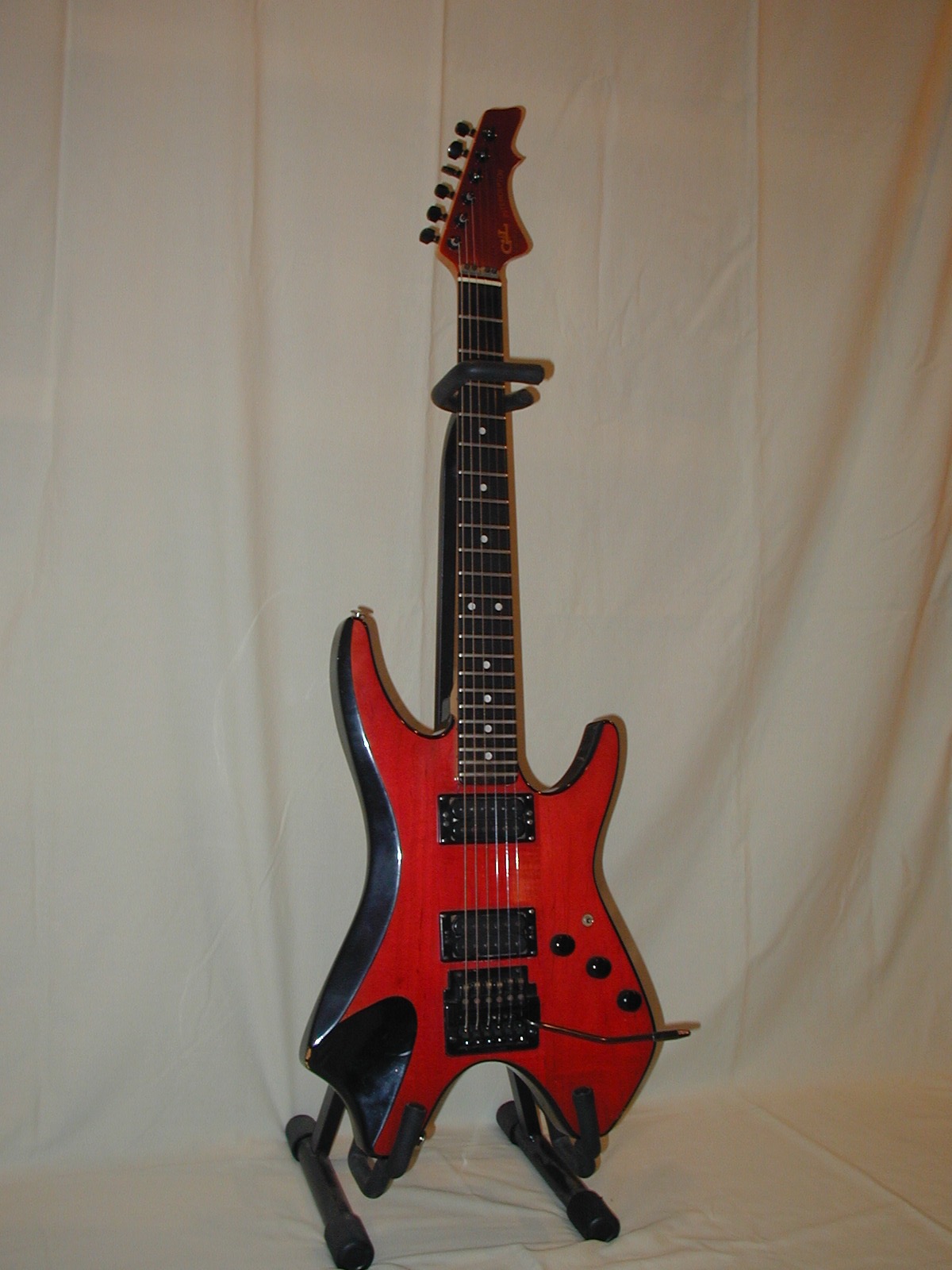
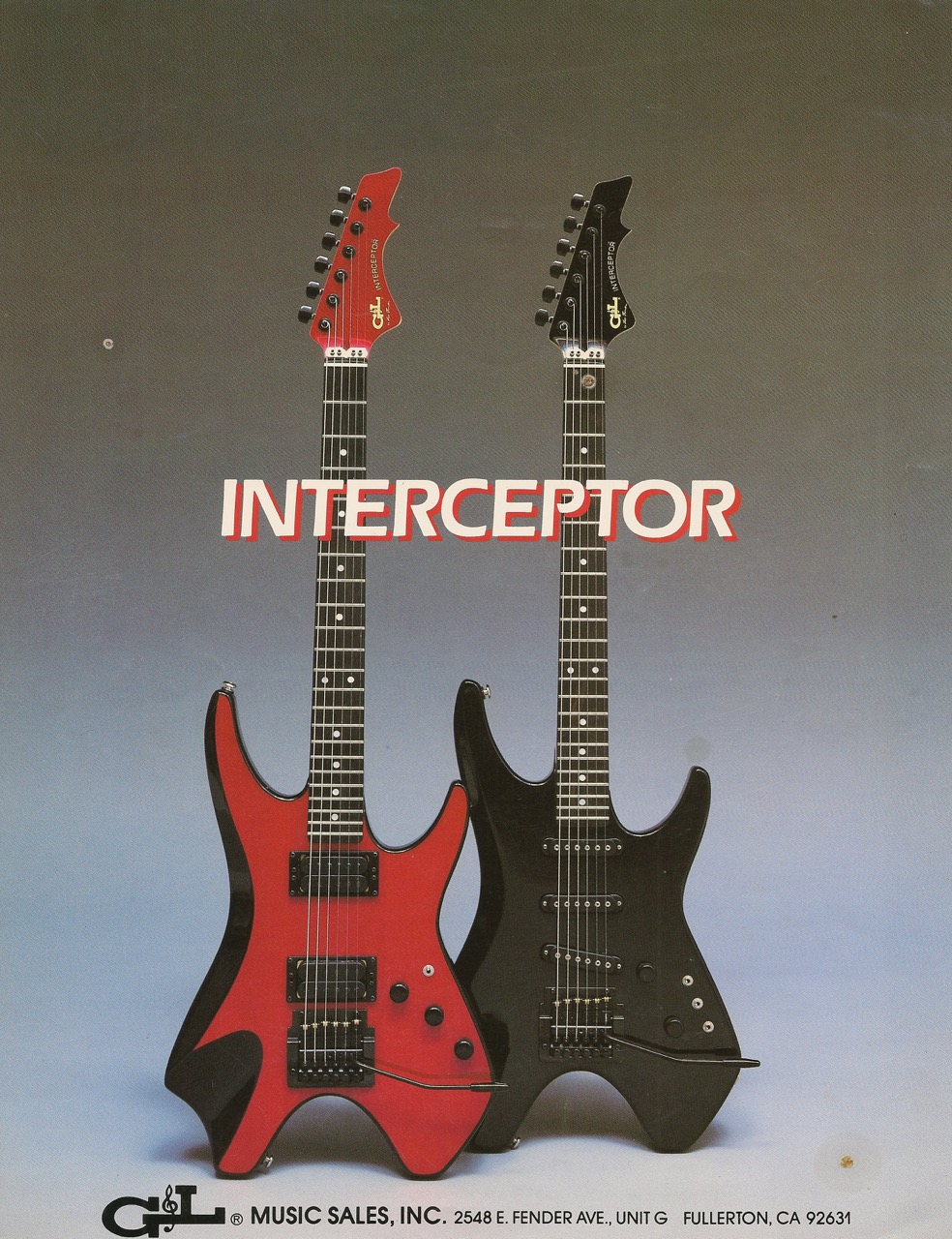
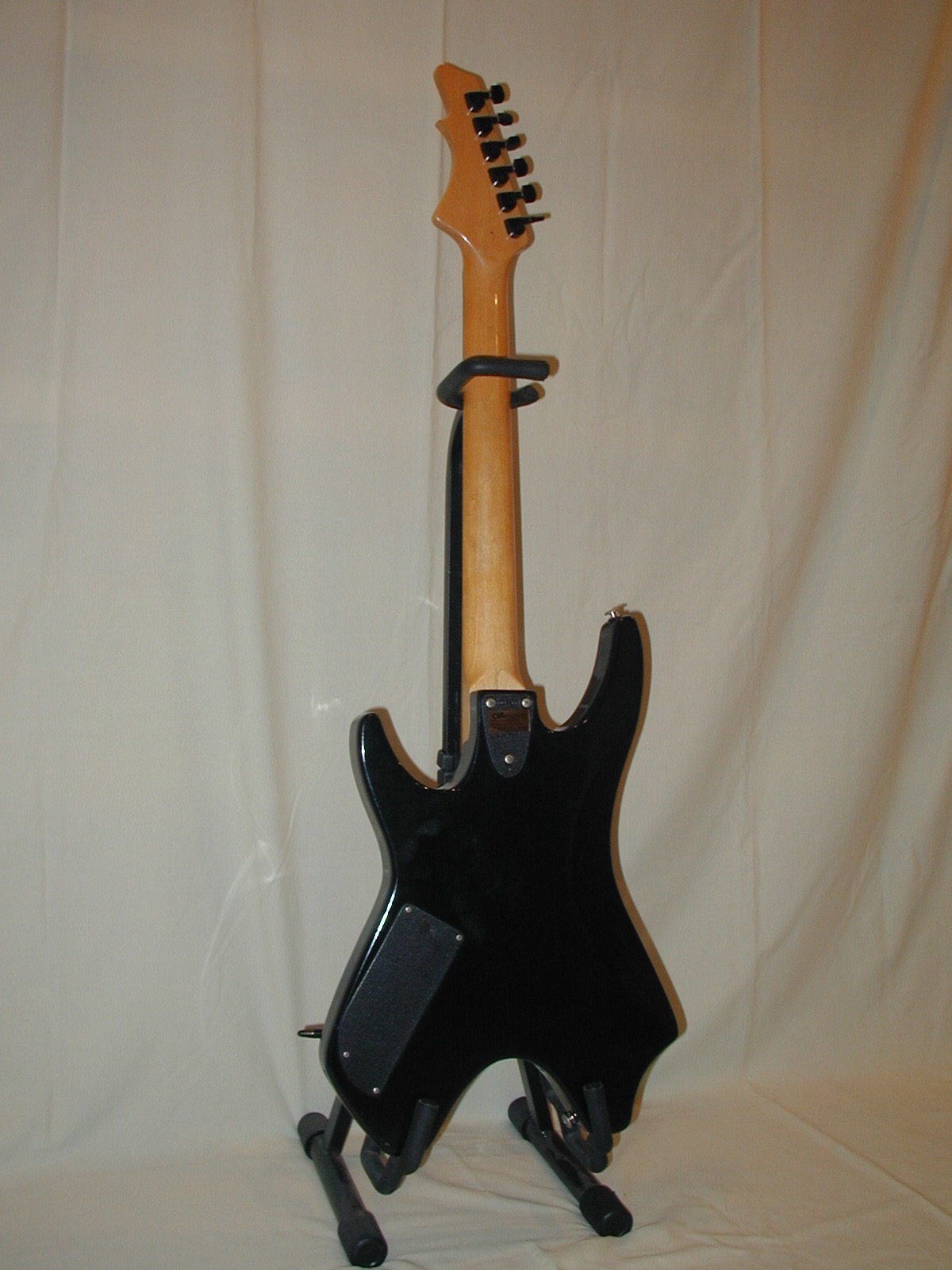
Looking closer at the ad, a couple of difference are evident. The Interceptor SSS on the right has similar controls as what can be found on the Invader of the day: a master volume and master tone control combined with a separate on/off mini-toggle for each pickup. Although the DFV could still be specified for the vibrato unit, both guitars in the ad show the more common Kahler 2320 flat mount fine-tuner floating vibrato with brass rollers and cam. Note the the “black Krome” finish on the shown units would cost you an additional $60.
The body of a 1st style X-body Interceptor is shown in between the front and back of the body of this guitar for comparison to display the difference in amount of wood behind the vibrato unit as well as the slight different in the Red/Black color scheme on both: Clear Red/Black on this guitar and Red-over-Black on the 1st style X-body Interceptor. In addition, one will notice how the hyperbola has "opened" up on this 2nd style X-body Interceptor. But also notice how the arm contour comes in a little more compared to the 1st style X-body:
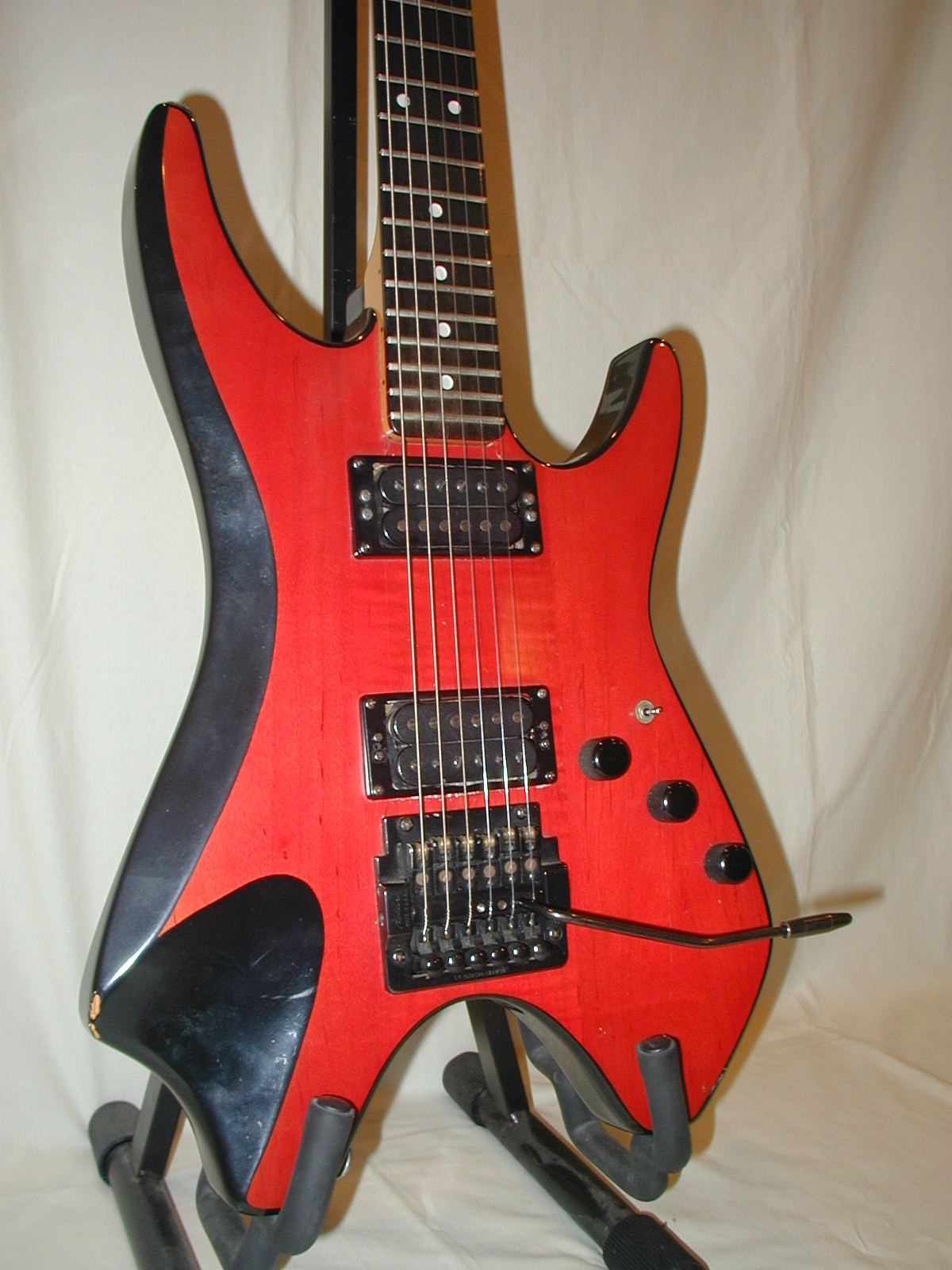

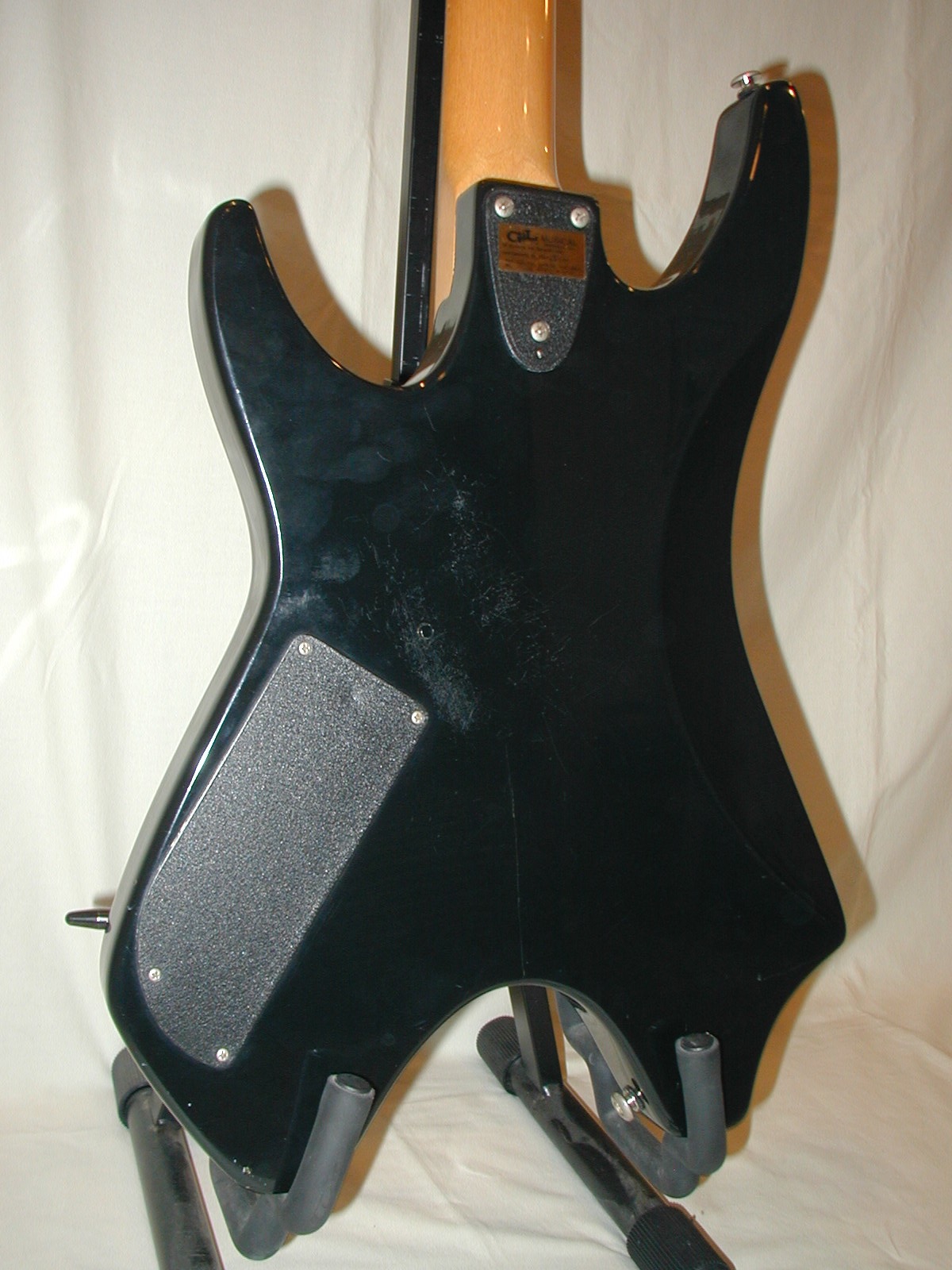
The reason for that is that the posts for the DFV created a weak spot where hairline cracks could easily form. And to mount the Kahler unit, one needed more wood anyway. The body on this guitar seems to be 3-part maple with the Kahler unit completely fitting on the center part, which exhibits just a little flame figure:

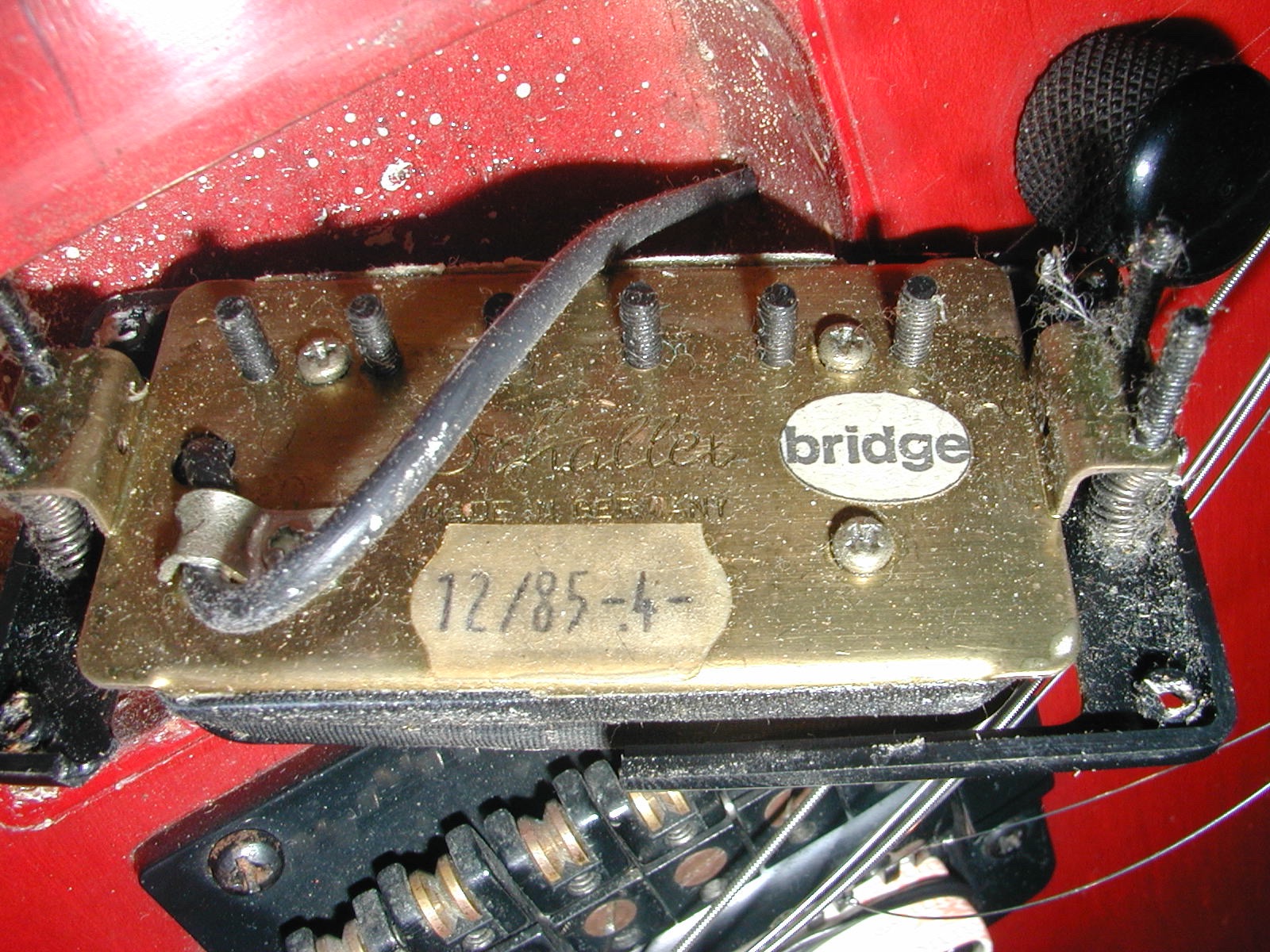
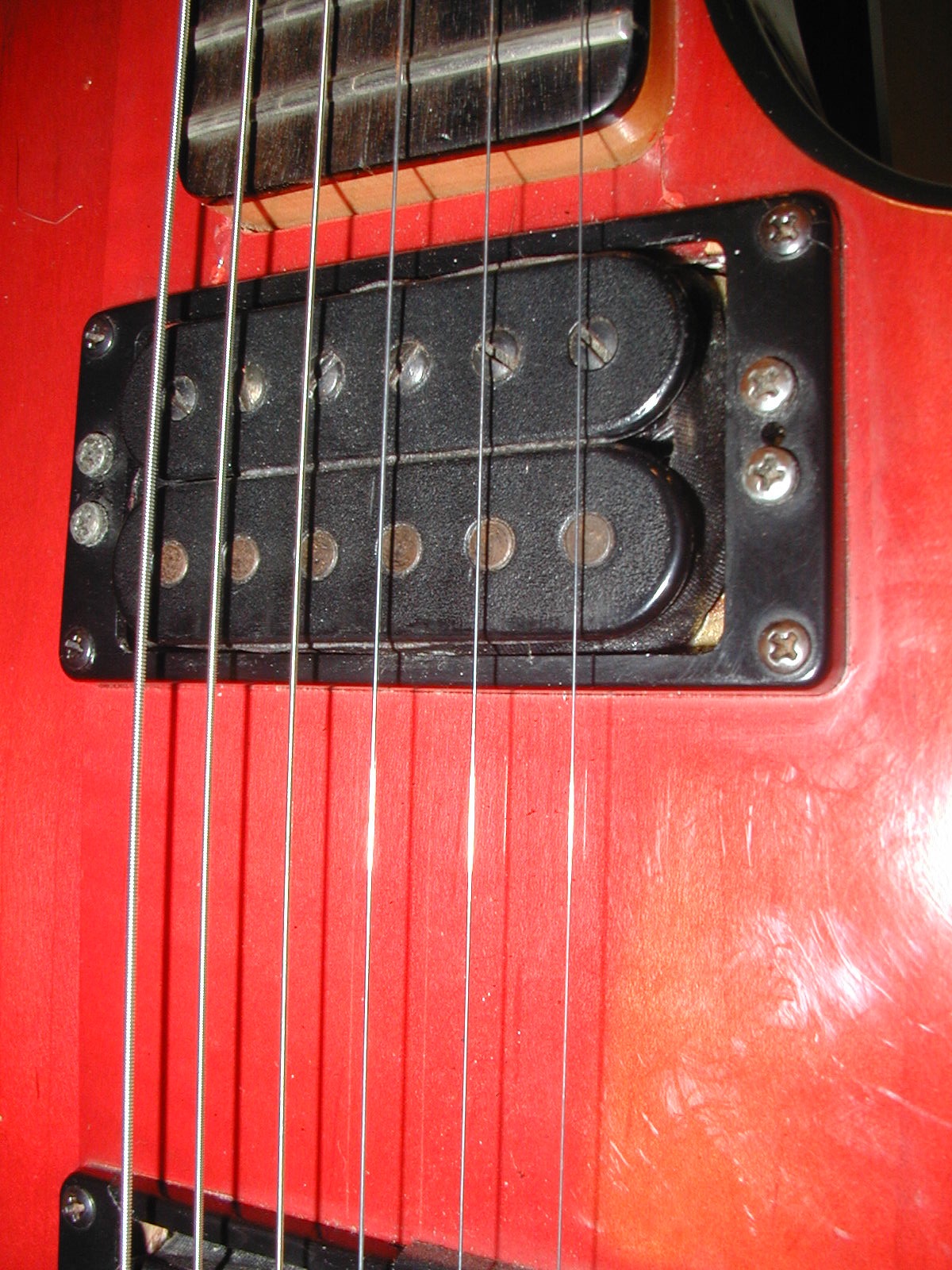
Instead of the G&L HG-2R, the Interceptor HH has Schaller humbuckers with DC-impedance of about 8kΩ. Dale knew what the market wanted: humbuckers with similar characteristics as the venerable Gibson PAF (or even hotter) but Leo was reluctant to design an MFD capable of being a direct drop-in replacement. To force the issue, Dale asked Helmut Schaller, a mutual dear friend of his and Leo, to source such pickups. The complete line of G&L Superstrat models introduced in 1985, the aforementioned Invader, Rampage, and Superhawk, all initially came with the same Schaller humbucker.
The reason I believe this is the same guitar as in the ad has to do with the color scheme, presence of a black Krome Kahler unit, but also with the lay-out of the controls. It turns out there are subtle differences in how the controls are laid out. Some specimens, for instance this 1986 Interceptor HH once owned by GbL co-founder Brad Traweek, have the master volume control and separate tone controls for each pickup in a straight line. But the one in the ad has them in a slight curve, as does this guitar (as well as this 1986 Interceptor HH with chrome Kahler unit). The 3-way pickup selector is a rather diminutive toggle switch, not as robust looking as one usually seen. The output jack is now on the side of the body.


The redesigned body now has pointier horns. What remained are the arm contour and bevels on the bass side of the body, front and back, that make this model as comfortable to play as the 1st style X-body Interceptor, again in any playing position. Since the Kahler does not require a spring cavity, the back is rather bland especially with it full Black finish.
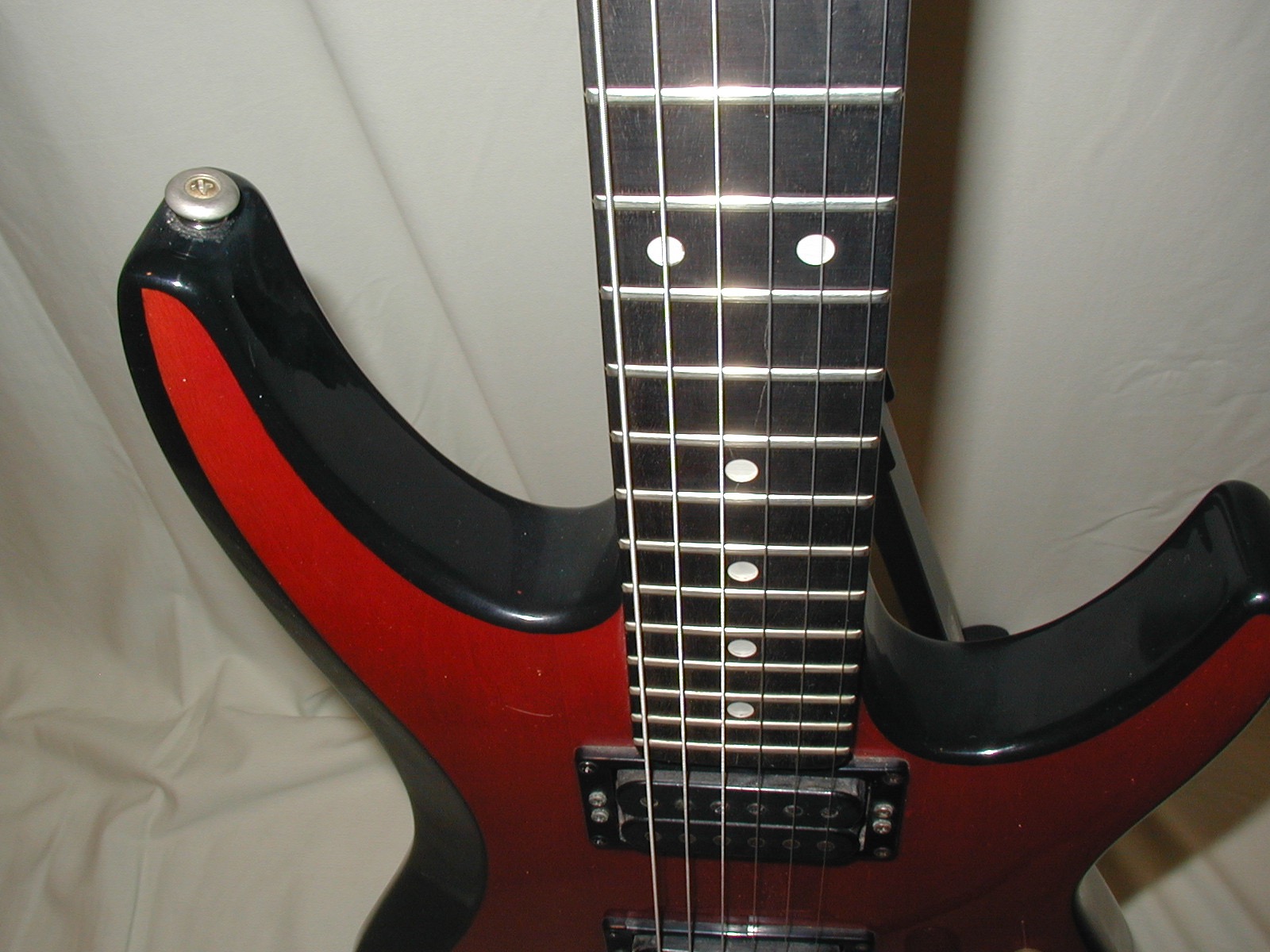
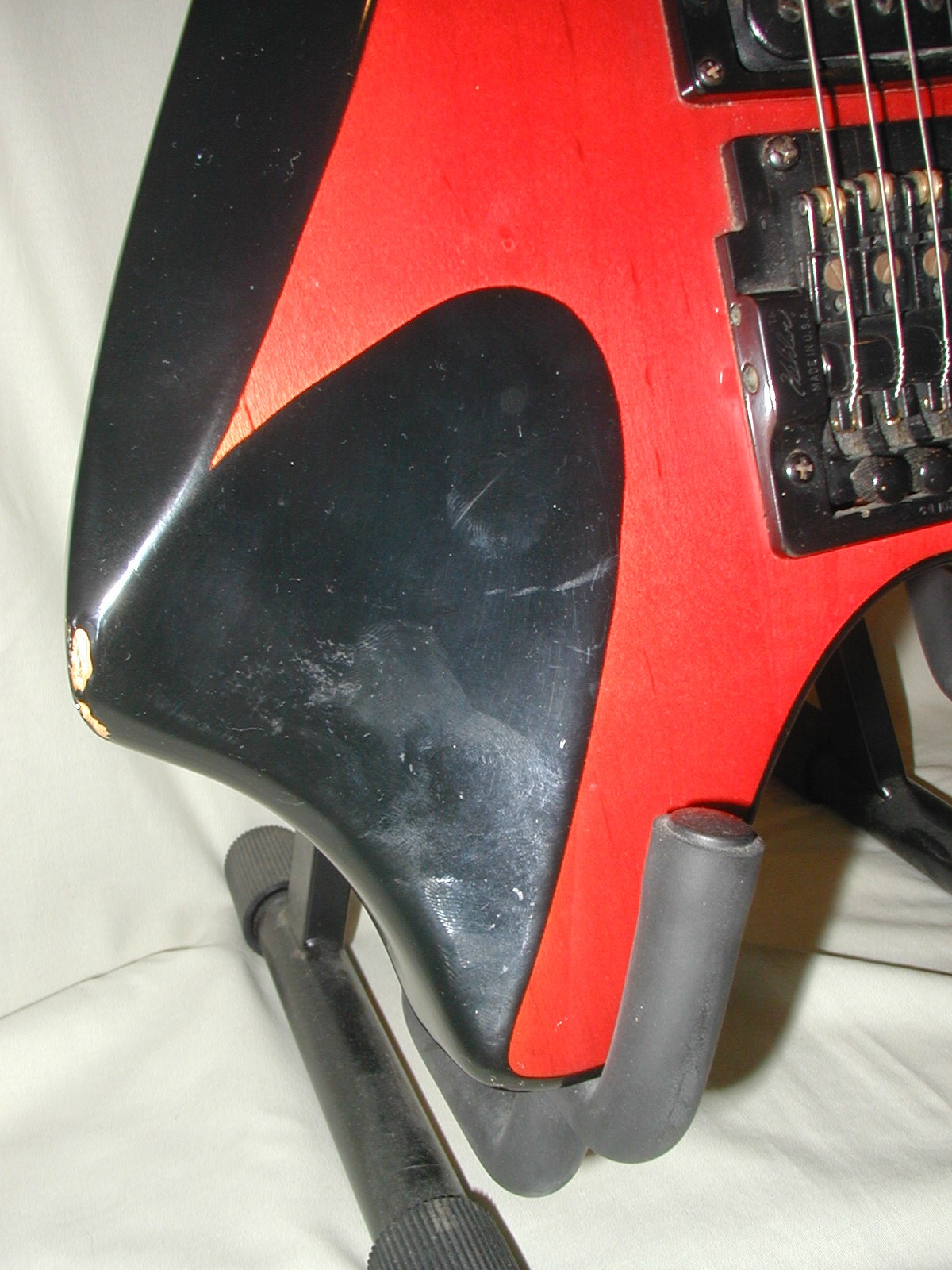
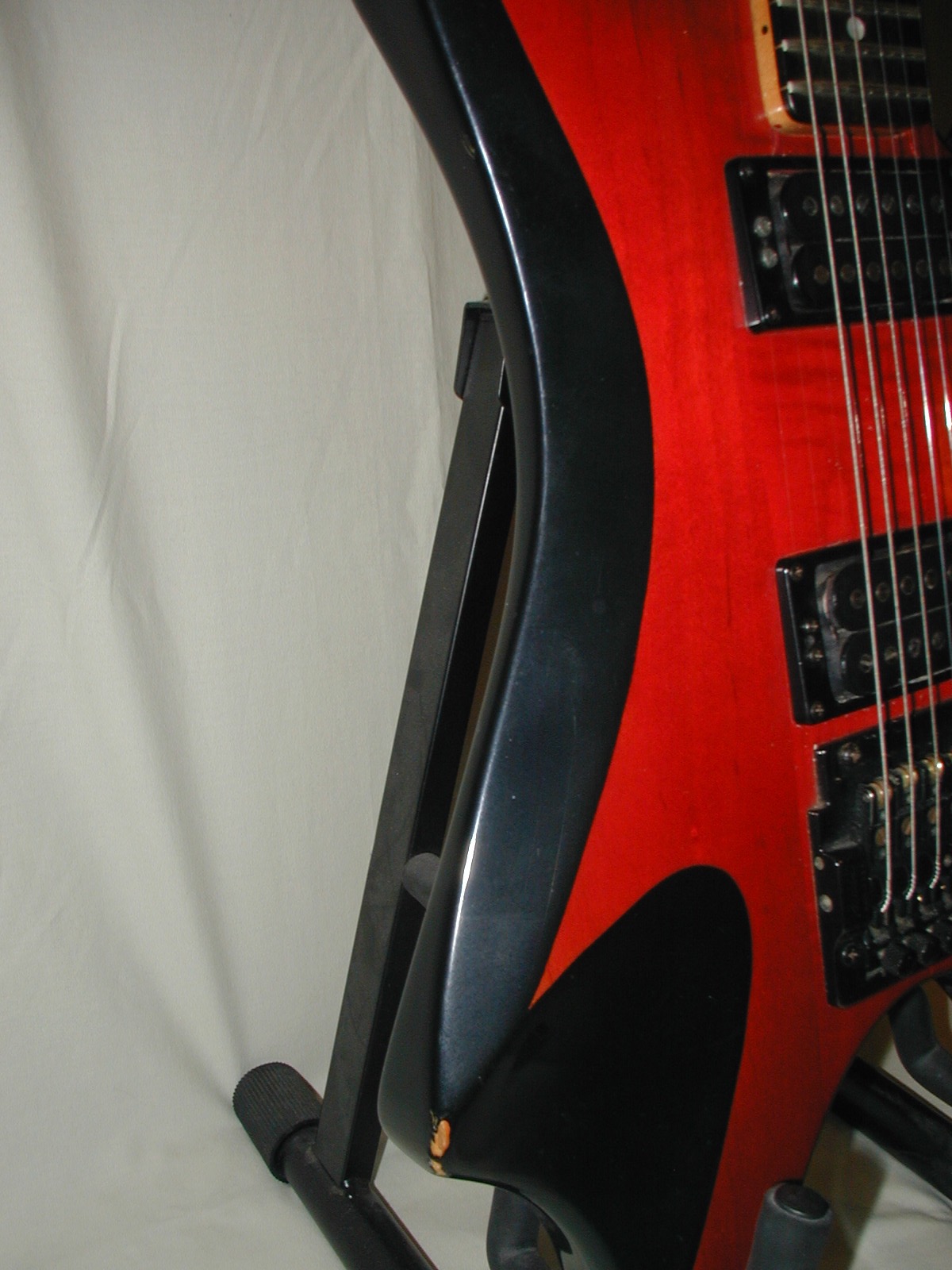
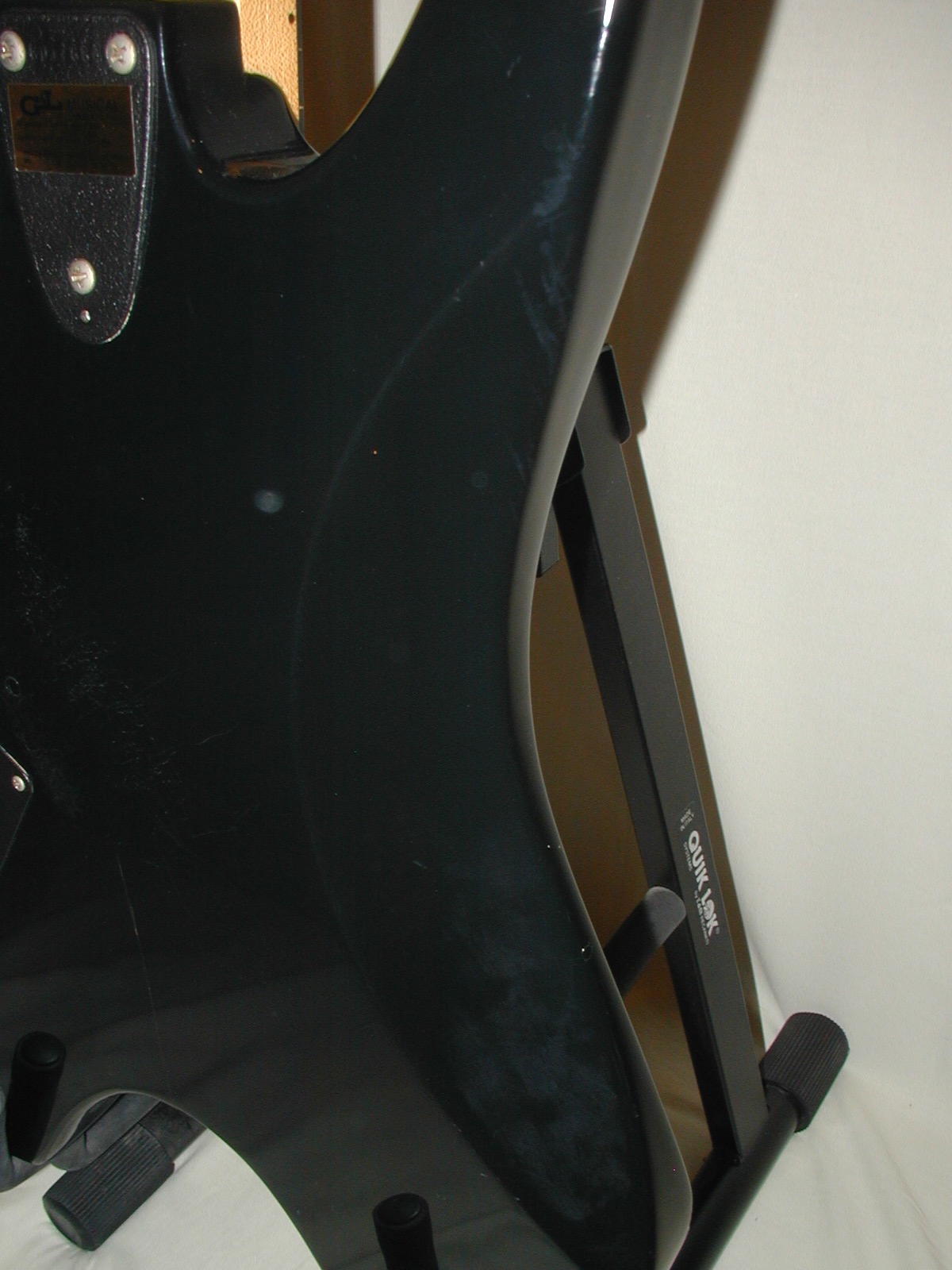
Of course with the controls rear-mounted, one does need a control cavity. The CTS 250kΩ Audio Taper volume control has a 200pF capacitor. Both tone controls are CTS 250kΩ Audio Taper pots with .022μF cap.
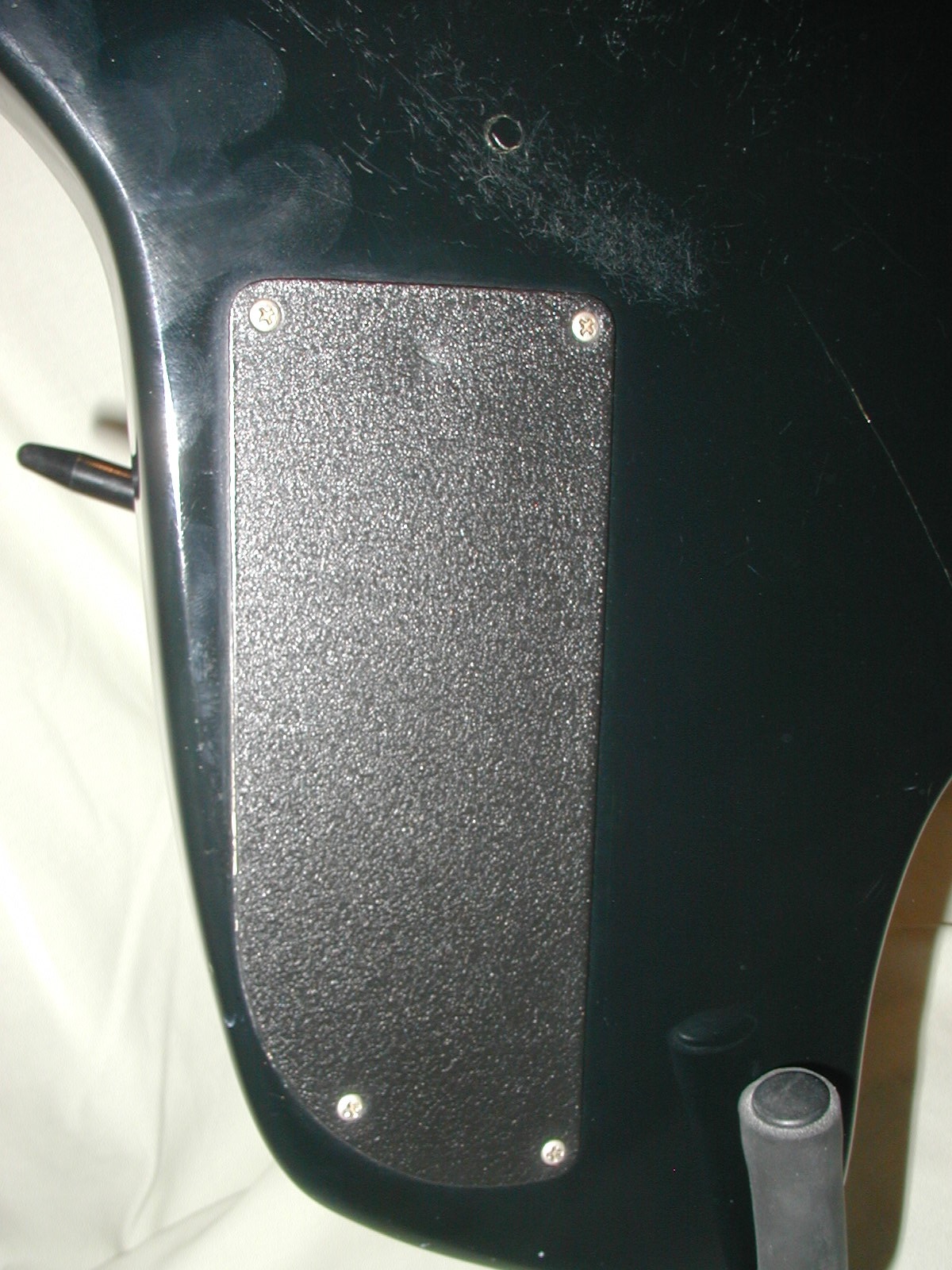

The serial number (G017884) can be found on the 3-bolt neck plate. When taking off the neck, a surprise was in waiting. The body date stamp is OCT 31 1984, more than a full year before the supposed "introduction" of this model. But not a surprise knowing that is exactly the time frame G&L started to address the problems inherent to the 1st style body. The bottleneck at G&L was always the production of necks since they would not keep an inventory of them; they rather preferred to use those as soon as they came of the line. This is the reason body and neck dates can differ by quite a bit. This is true in this case too since the neck date is JAN 14 1986, which at least is consistent with it being the instrument in the ad. Why did it take until 1986 to create the slick? For exactly the same reason as discussed above: many 1st style X-bodies had been produced already, each awaiting a neck. That inventory needed to get exhausted first before a switch could be made. And remember, the X-body Interceptor did not sell all too well ...
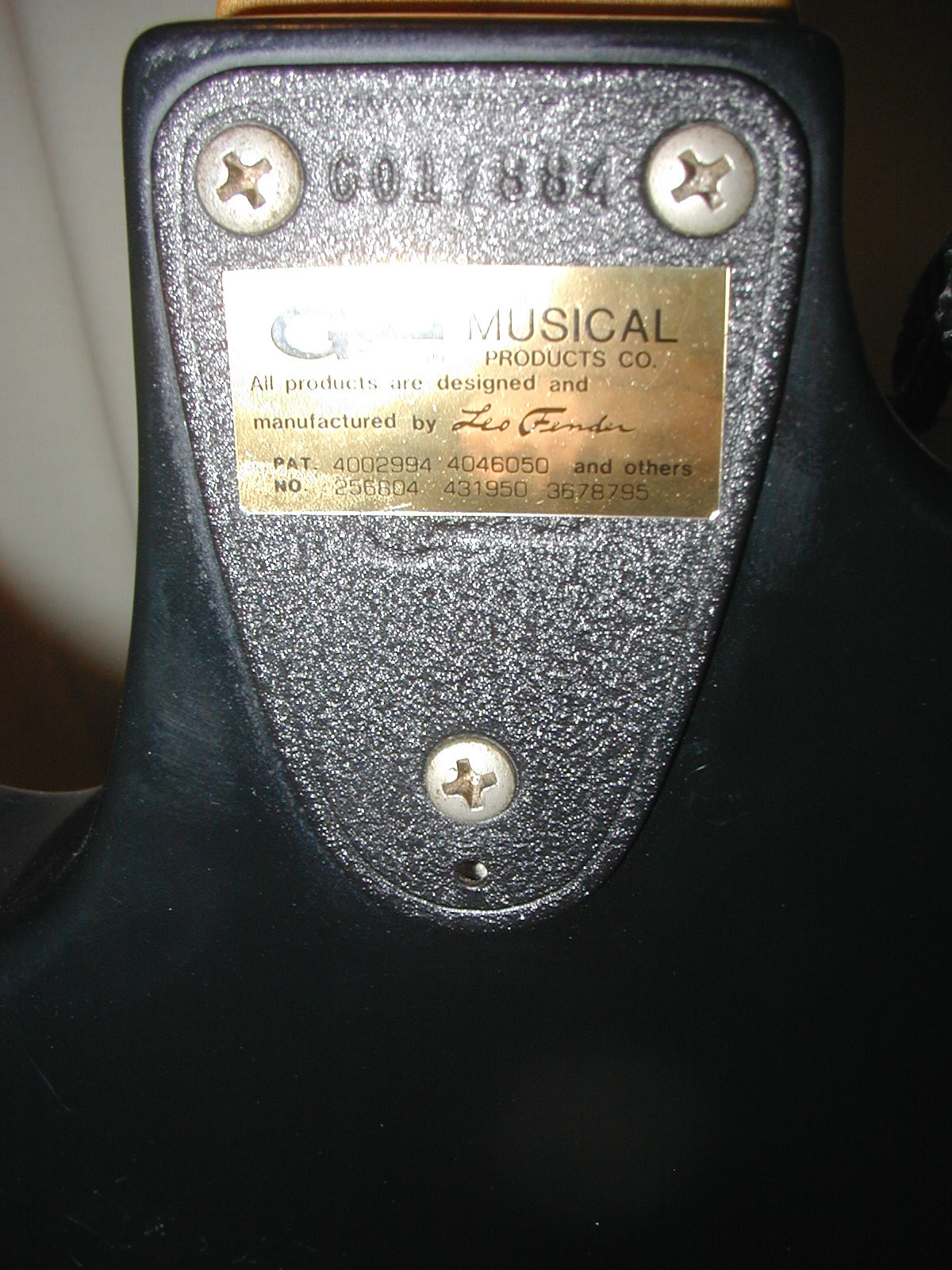
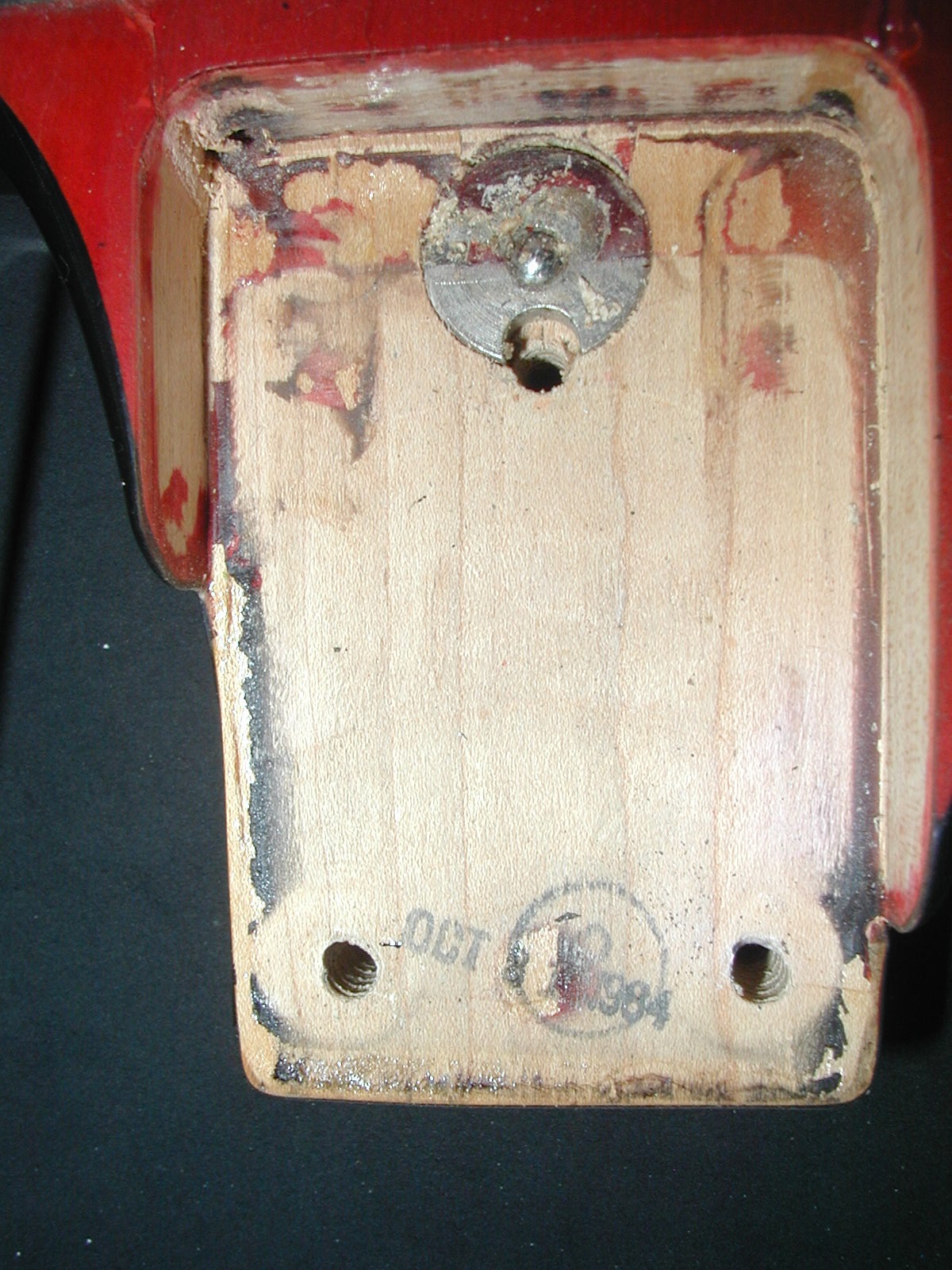
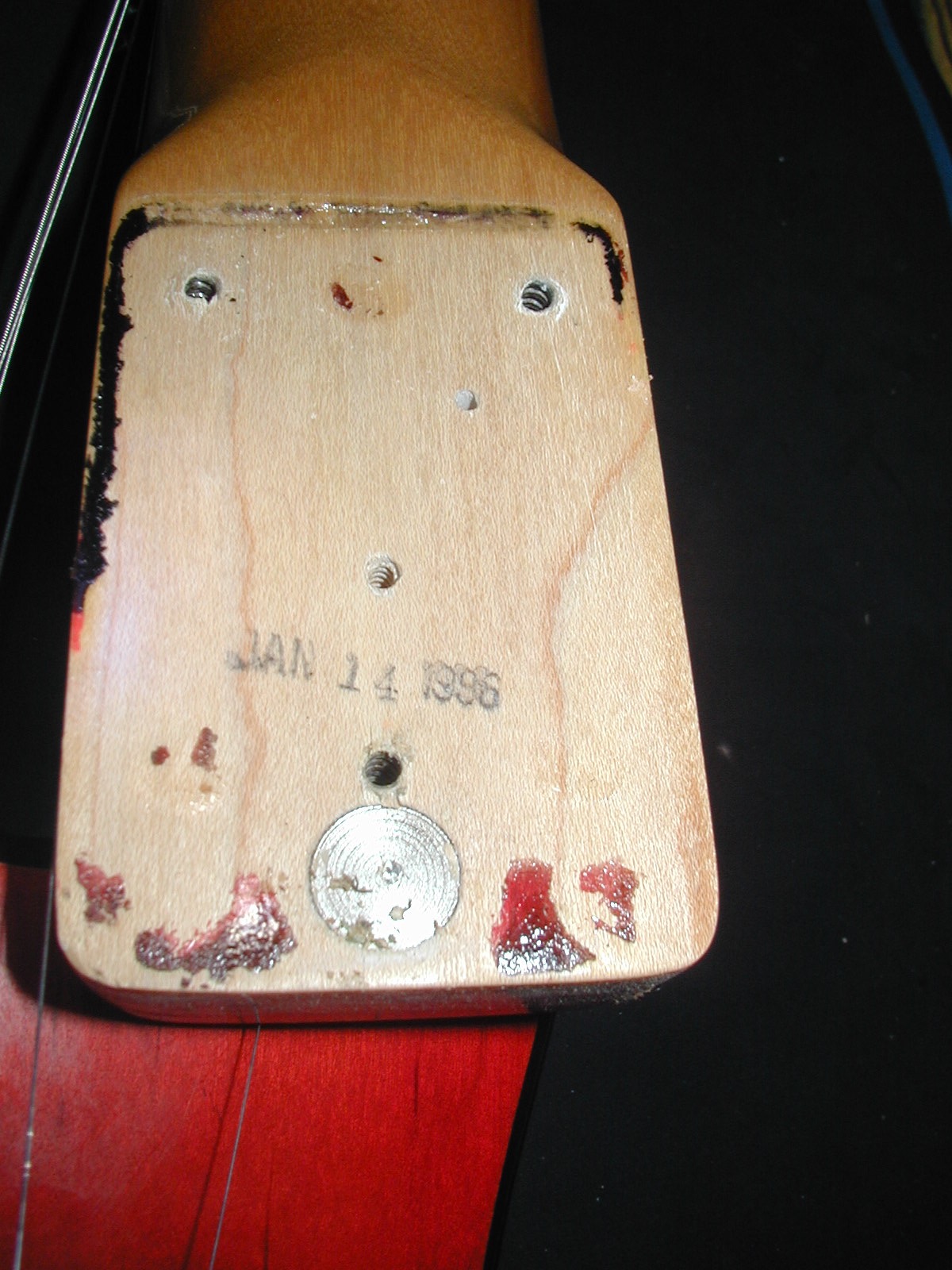
The neck is a pre-BBE #4 hard-rock maple neck with 25” radius ebony fingerboard and 1¾” nut width; nice for somebody with big hands.


The color-matching sickle headstock still has the G&L teat and G&L black chromes closed tuning machines. With the Kahler vibrato unit comes Leo’s patented string clamping mechanism. Although not the greatest (watch for a future installment on that), it does work.
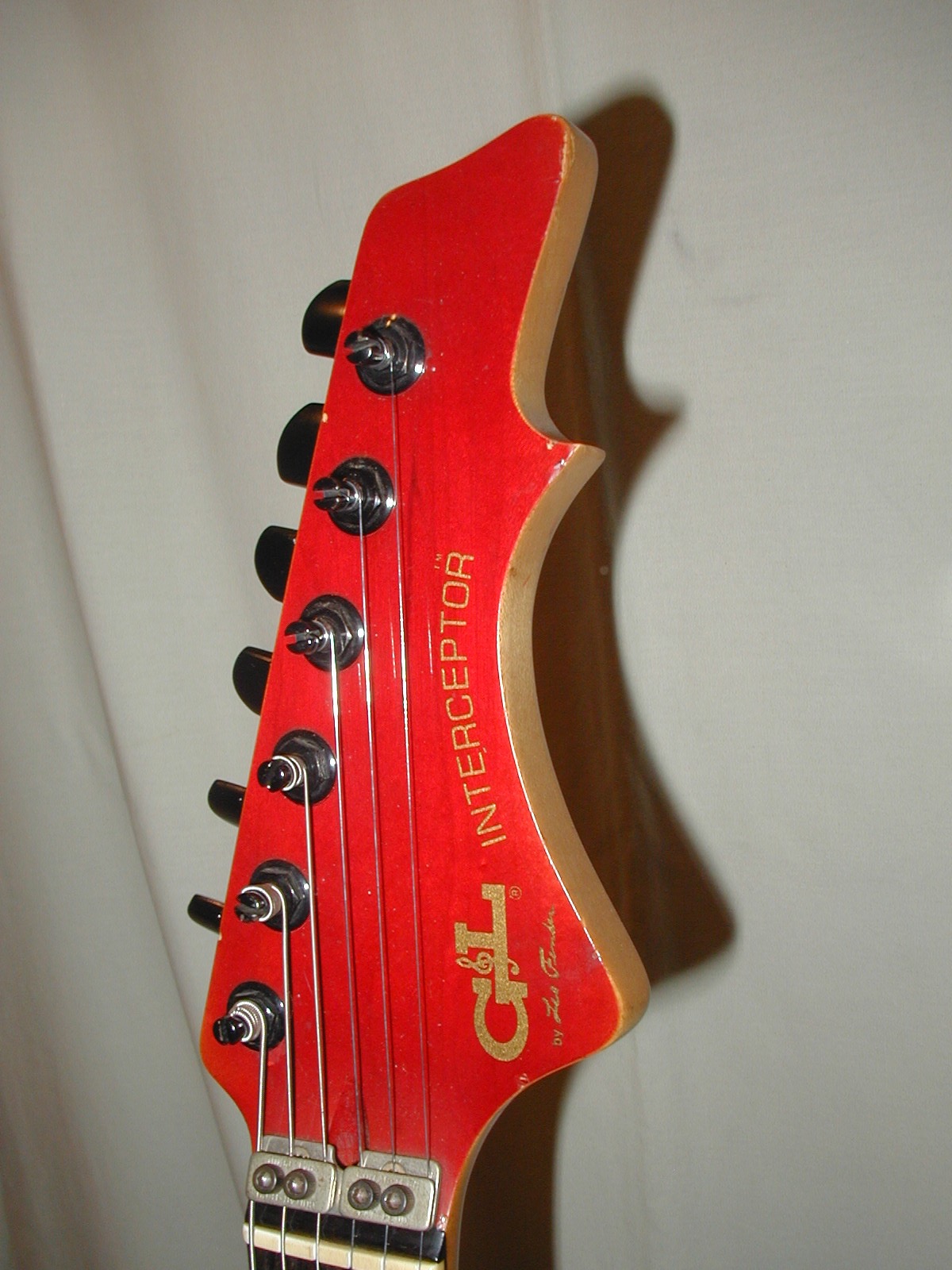
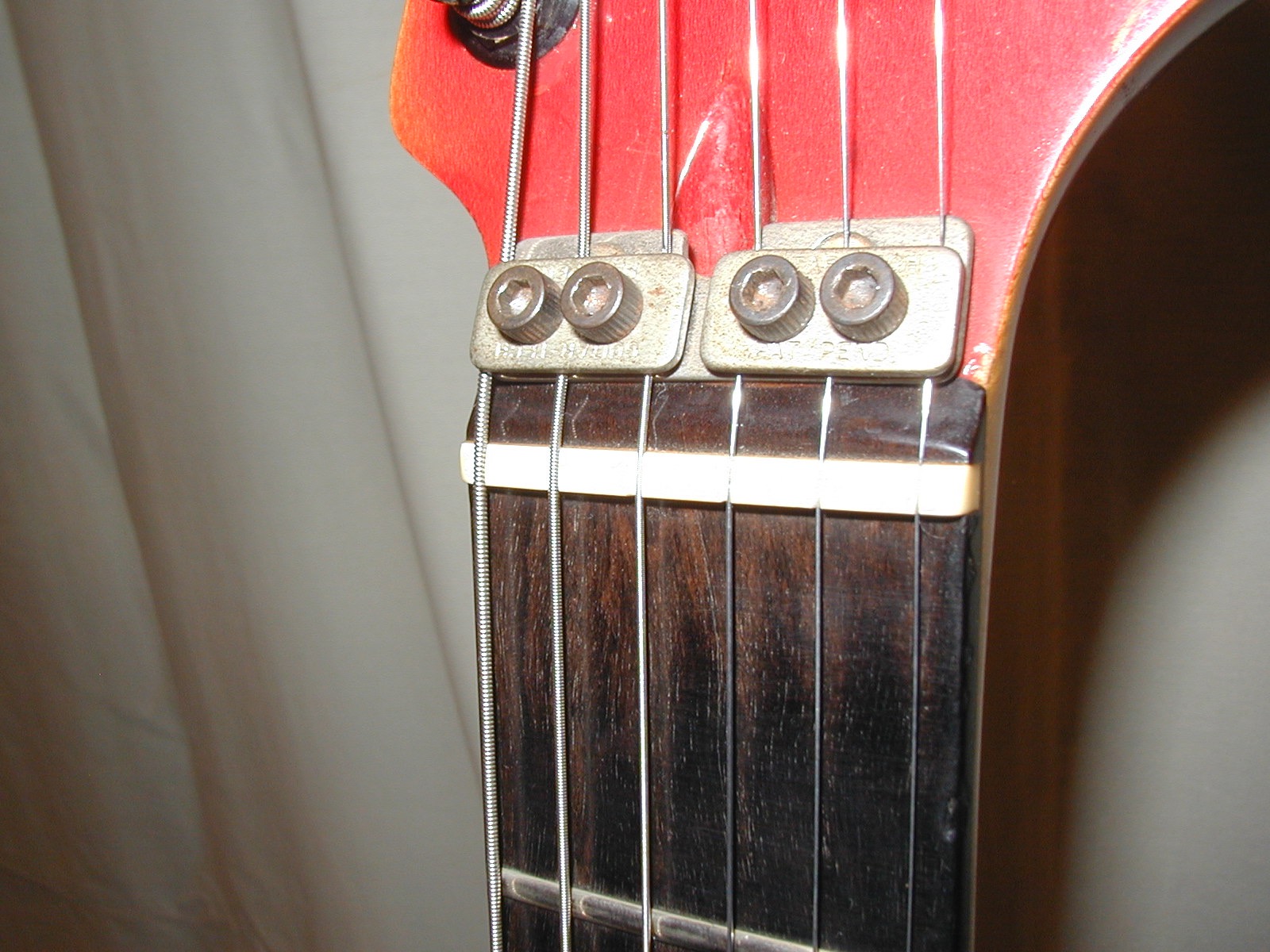
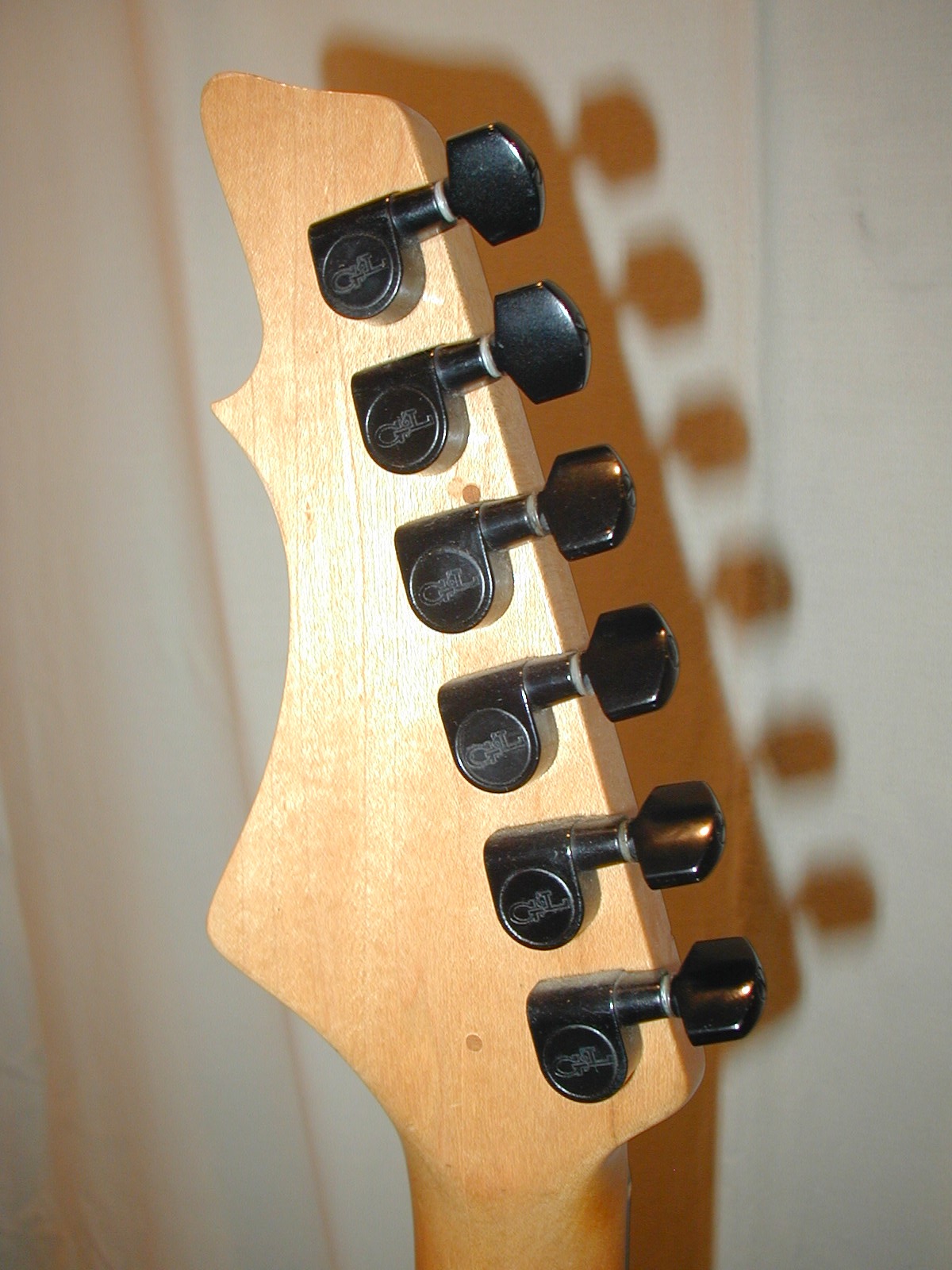
At this time, the X-body had been in production long enough a custom fit case had been designed. It even has foam filling the butt cut-out as can be seen below.
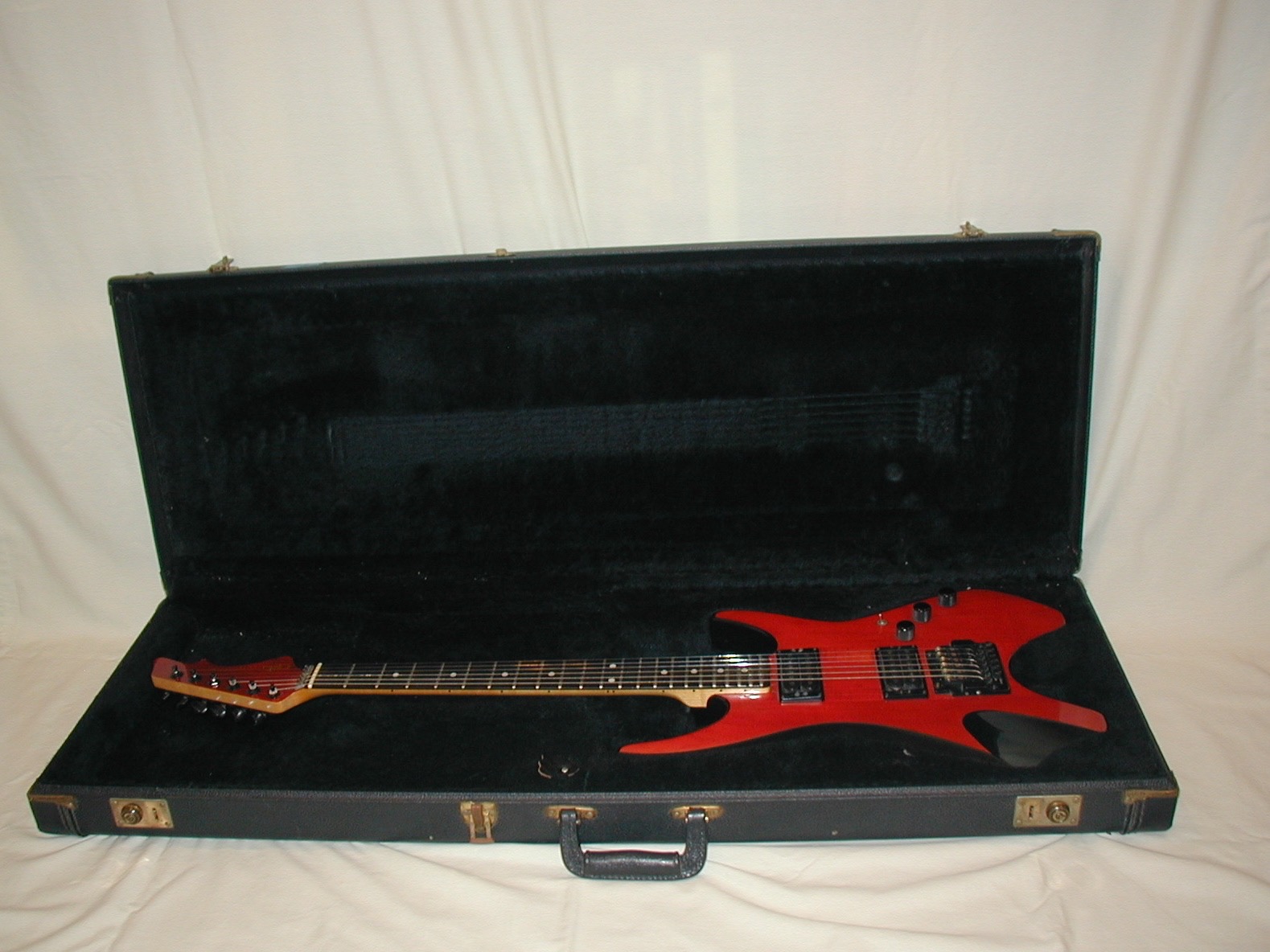
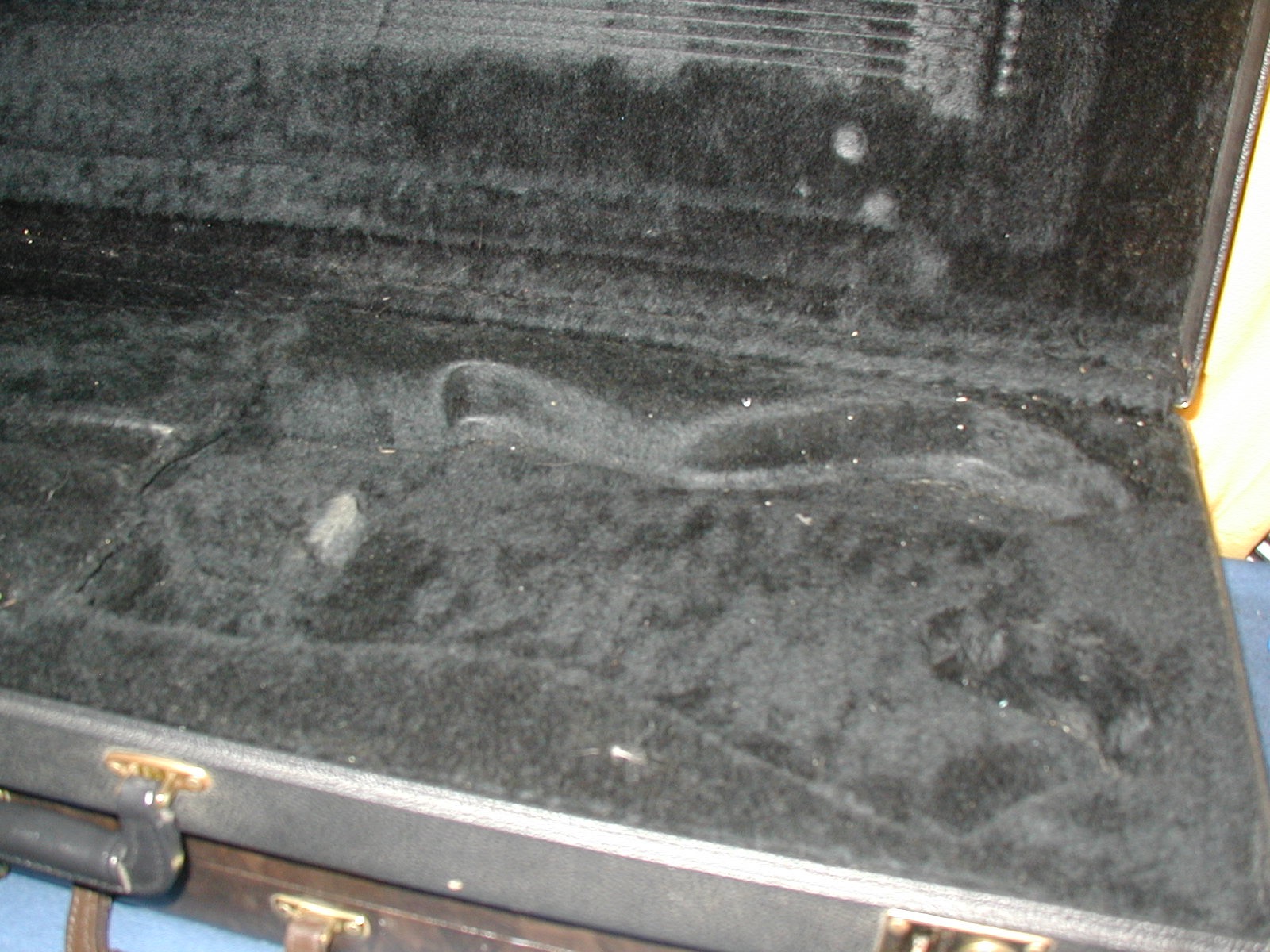
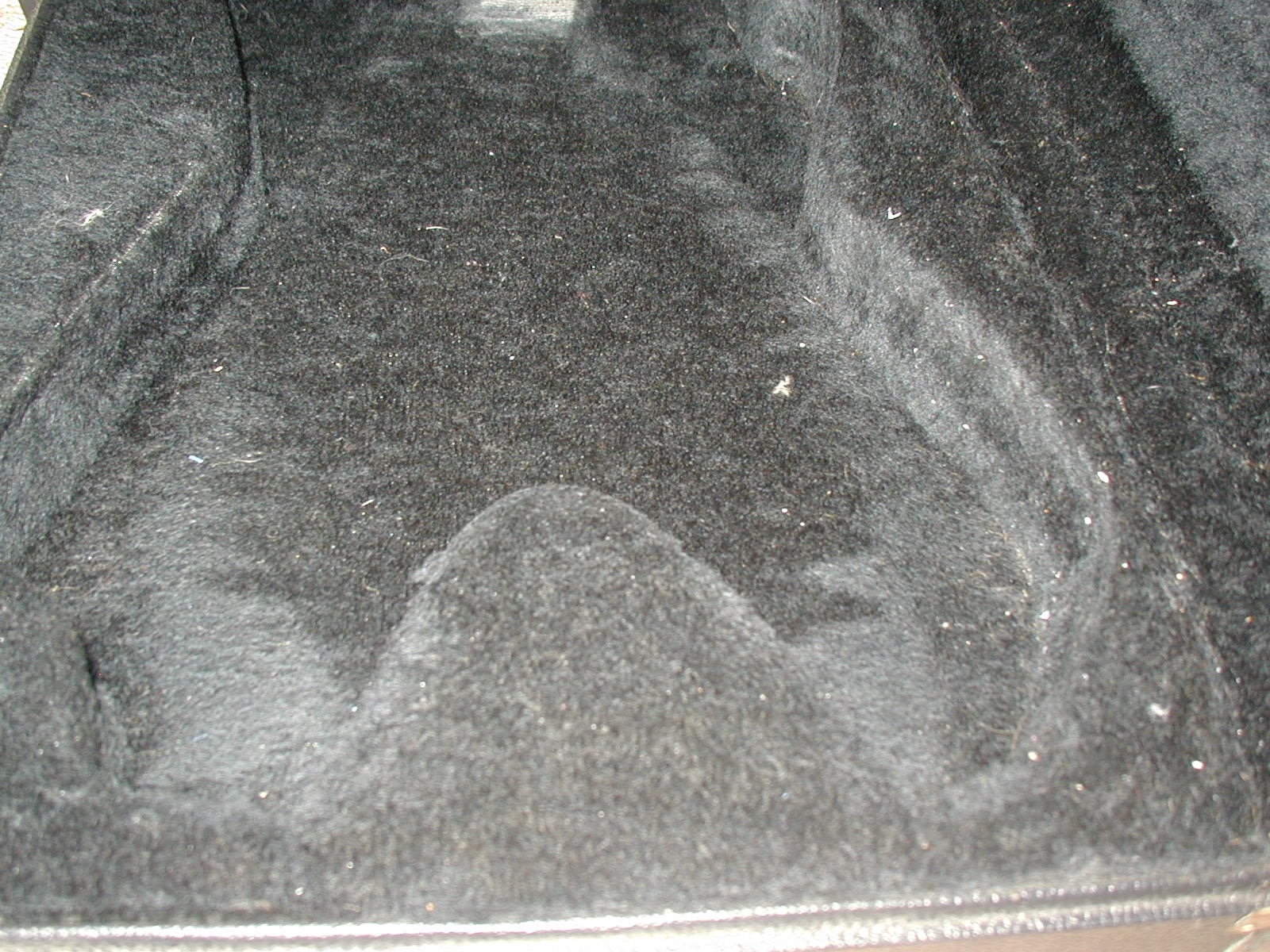
In all only 19 of these 2nd style X-body Interceptors in any configuration were built. Since that number derives from a document authored by Dale Hyatt, I believe it to be more reliable than the 8-12 stated on the Rarebird page for the Interceptor as sourced by G&L researcher Paul Bechtoldt. However, to call about every one of them a "prototype" would not be a stretch; each seems to have its own quirk. Beyond the 2 Gallery albums both referenced here as well as on the Rarebird page, one can also find albums of Mikael Helén’s flamed Clear Red/Black Interceptor HH as well as Big Daddy’s Black Interceptor SSS.
Next time two 3rd style Interceptor guitars will be discussed. At least that is the plan, pending the number of pictures. We’ll see …
- Jos